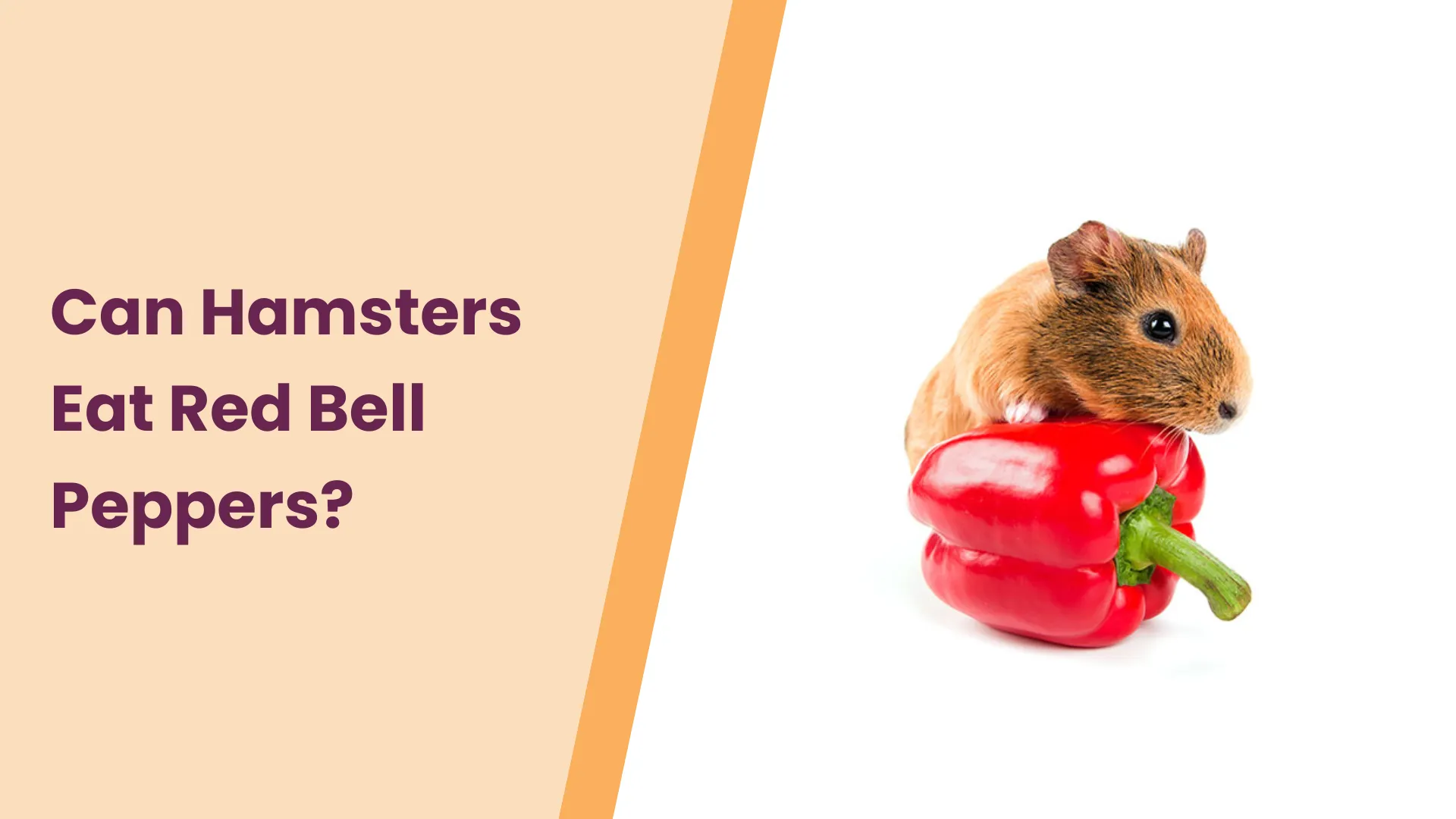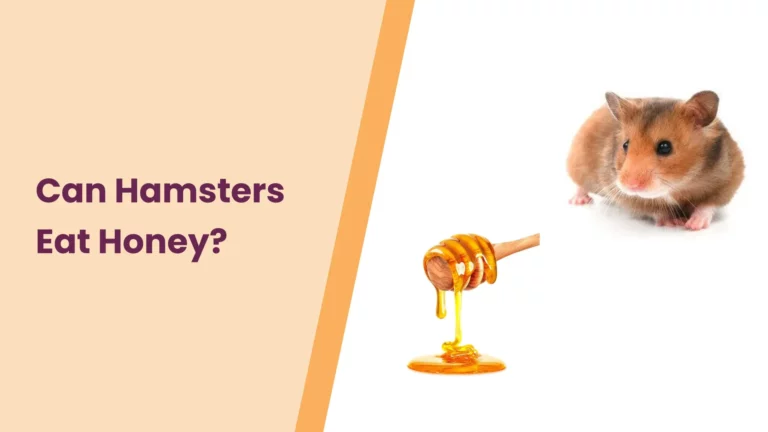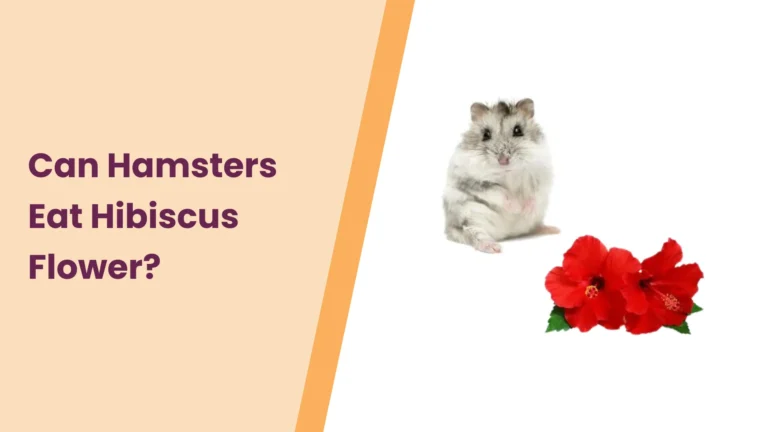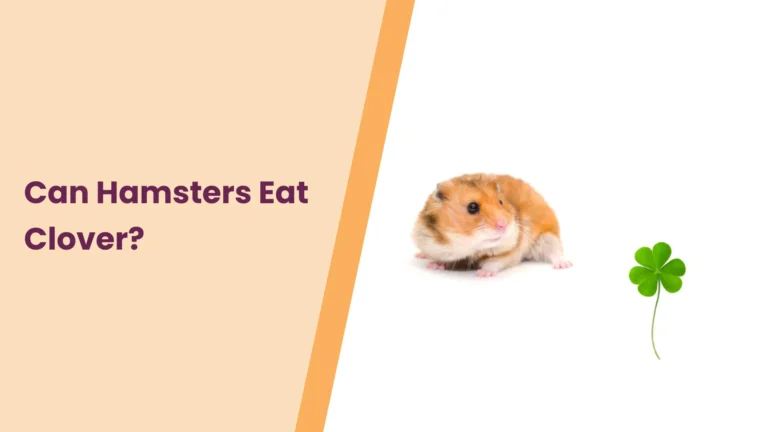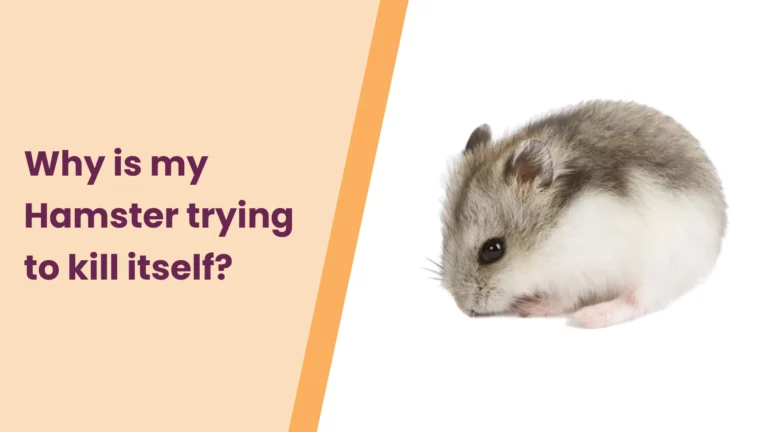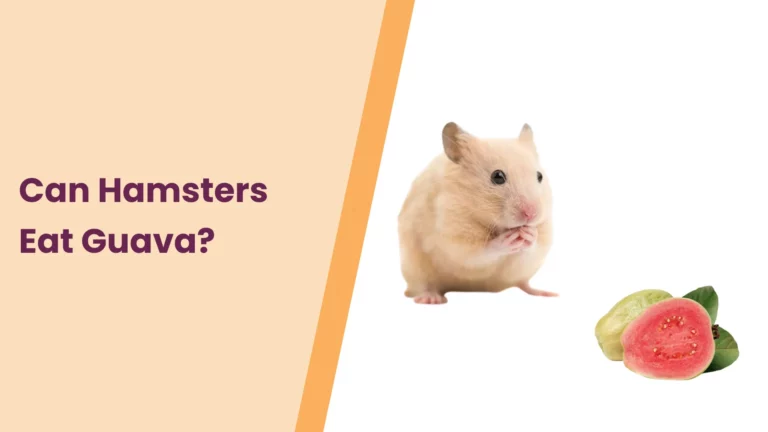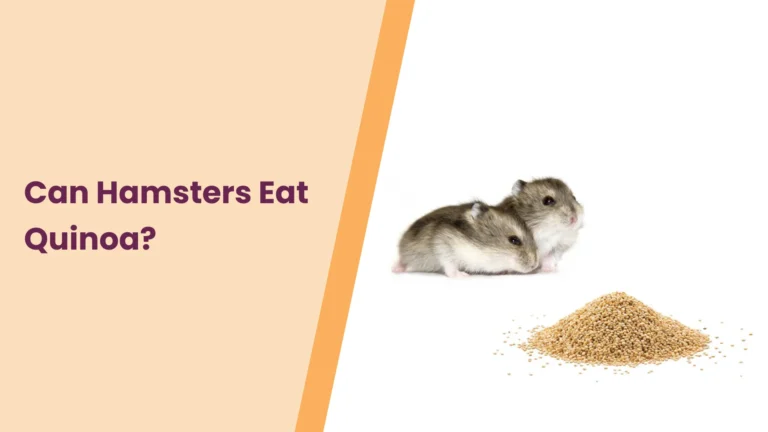Can Hamsters Eat Red Bell Peppers – All You Need To Know
You’ve got an adorable, pint-sized fluff ball as your furry family member, and you’re committed to giving them the best care possible. As a conscientious hamster owner, you’re likely wondering about the finer points of your pet’s diet. One question that’s been buzzing in the back of your mind: “Can my hamster enjoy the vibrant crunch of red bell peppers?”
Well, you’re in the right place because we’re here to unravel the mystery surrounding hamsters and these colorful veggies. In this guide, we’ll delve into the nutritional benefits, potential risks, and expert tips on safely introducing red bell peppers to your hamster’s menu.
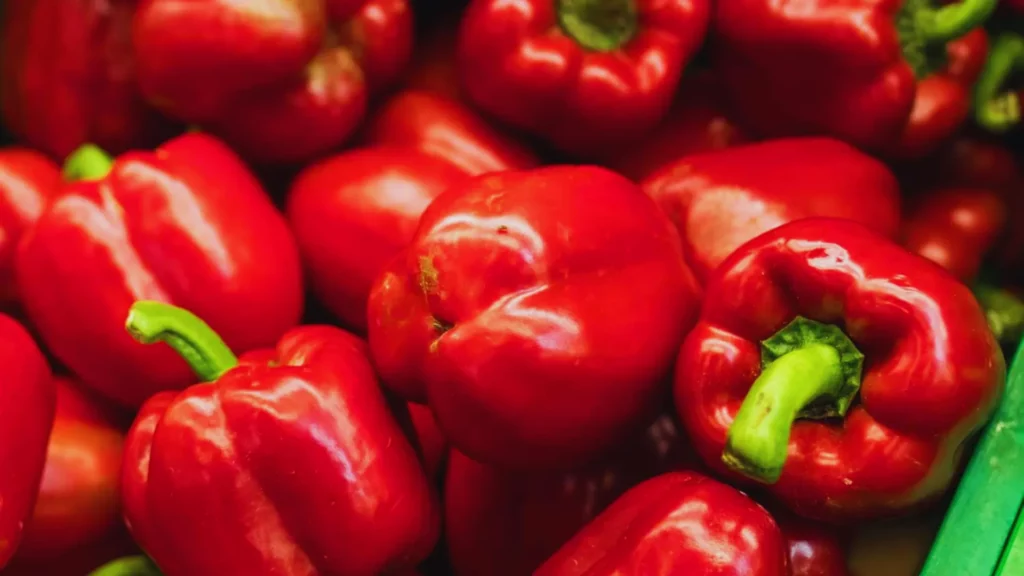
Let’s embark on this journey together, ensuring your little companion’s diet is as delightful as they are.
Hamster Can Eat Red Bell Peppers
When it comes to pampering your beloved hamster, providing a well-rounded diet is key to keeping them happy and healthy. One surprising addition to their menu is the vibrant and versatile red bell pepper. So the answer to the burning question, ”Can Hamsters Eat Red Bell Peppers?” is indeed yes.
While these colorful veggies might not be the first thing that comes to mind for hamster treats, they do have a lot to offer.
1. A Bounty of Vitamins: Red bell peppers are packed with essential vitamins that can boost your hamster’s overall well-being. They’re particularly rich in vitamin C, an important antioxidant that supports a strong immune system. This vitamin can help your furry friend ward off illnesses, making it a valuable addition to their diet.
2. A Source of Hydration: Bell peppers are also known for their high water content. This natural hydration can be beneficial for hamsters, as they tend to have small water requirements. Including red bell peppers in their diet can help ensure your hamster stays adequately hydrated.
3. An Array of Antioxidants: Antioxidants are superheroes when it comes to combating free radicals that can cause cellular damage. Red bell peppers are loaded with various antioxidants like beta-carotene and lutein, which are great for your hamster’s eye health and overall cellular protection.
4. A Dash of Fiber: Fiber is essential for healthy digestion, and red bell peppers contain a decent amount of it. This can aid your hamster in maintaining regular bowel movements and avoiding digestive issues.
5. A Flavorful Variety: Hamsters, like us, can get bored with the same old diet. Red bell peppers introduce a delightful change of pace, adding color and flavor to their meals. Their crunchy texture can be an entertaining treat for your hamster to munch on.
While red bell peppers can offer these fantastic nutritional benefits, remember that moderation is the key. Overfeeding any food, even a healthy one, can lead to health issues. In the next section, we’ll explore the potential risks and precautions associated with introducing red bell peppers to your hamster’s diet.
Risks and Precautions
As much as red bell peppers can bring nutritional goodness to your hamster’s diet, it’s essential to be aware of potential risks and exercise due precautions. The key to keeping your furry friend healthy is striking the right balance.
1. Moderation Matters: While the vitamins and minerals in red bell peppers can be beneficial, overindulgence can lead to problems. These vibrant veggies should be considered an occasional treat, not a dietary staple. Excessive consumption may cause digestive upset or diarrhea, so it’s crucial to limit the quantity.
2. Variety Is the Spice of Life: Hamsters thrive on a diverse diet, so don’t rely solely on red bell peppers. It’s recommended to incorporate a range of fresh vegetables and high-quality hamster pellets into their meals. This variety ensures your hamster receives a well-balanced nutrition that covers all their dietary needs.
3. Freshness Matters: When offering red bell peppers to your hamster, always ensure they are fresh and free from mold or any signs of spoilage. Freshness guarantees that your hamster gets the best nutritional benefits without the risk of ingesting harmful substances.
4. Observe for Allergic Reactions: Just like humans, hamsters can have individual sensitivities. When introducing red bell peppers for the first time, watch your pet closely for any signs of allergies or adverse reactions. Common indicators include lethargy, diarrhea, or changes in behavior. If any of these symptoms arise, it’s best to discontinue feeding red bell peppers.
5. Food Safety First: Always wash red bell peppers thoroughly before offering them to your hamster to remove any pesticides or contaminants. Organic options are an even safer choice if available, as they are less likely to contain harmful chemicals.
Incorporating red bell peppers into your hamster’s diet can be a delightful experience, but it’s essential to do so with care and attention. By understanding the potential risks and taking necessary precautions, you can ensure that your tiny companion enjoys these treats without any unwanted consequences. In the next section, we’ll guide you on how to introduce red bell peppers to your hamster’s diet safely.
How to Introduce Red Bell Peppers to Your Hamster
Now that you understand the nutritional benefits and potential precautions of offering red bell peppers to your hamster, let’s explore the art of introducing this delightful treat safely and gradually.
1. Start Small: When introducing red bell peppers, begin with a tiny portion. A small slice, about the size of your hamster’s paw, is a good place to start. This ensures that your furry friend can sample this new food without overindulging.
2. Observe Their Reaction: As you place the red bell pepper in your hamster’s habitat, keep a watchful eye. Your hamster may approach it curiously, nibble a bit, or even ignore it altogether. Their reaction can vary, so be patient and give them time to acclimate.
3. Gradual Increase: Over the course of a week, you can gradually increase the amount of red bell pepper offered. Monitor your hamster’s response, and if they seem to be enjoying it without any adverse effects, you can provide a slightly larger piece.
4. Balance with Other Foods: Remember to maintain a balanced diet for your hamster. Red bell peppers should complement their existing menu, not replace it. Continue providing hamster pellets, fresh water, and other safe vegetables to ensure a diverse and well-rounded nutrition.
5. Signs to Watch For: While introducing red bell peppers, keep an eye out for any unusual behaviors or digestive issues. If your hamster experiences diarrhea, changes in appetite, or any health concerns, it’s advisable to reduce or discontinue feeding red bell peppers.
6. Freshness Always: Ensure that the red bell peppers you provide are always fresh and clean. Remove any uneaten portions promptly to prevent spoilage or contamination in your hamster’s habitat.
By following these steps, you can introduce red bell peppers to your hamster’s diet in a controlled and safe manner. This gradual approach allows your tiny companion to savor the flavors and benefits of this nutritious vegetable without compromising their health. In the next section, we’ll explore some delicious alternatives to red bell peppers that can add variety to your hamster’s diet.
Alternatives to Red Bell Peppers
While red bell peppers can be a delightful addition to your hamster’s diet, it’s also important to offer variety to keep your pet’s palate stimulated and ensure they receive a well-rounded nutrition. Here are some tasty alternatives that your hamster can enjoy:
1. Carrots: Carrots are a hamster favorite. They’re not only packed with essential vitamins and minerals but also offer a satisfying crunch. Ensure you provide them in moderation as they are relatively high in sugar.
2. Cucumbers: Crisp and hydrating, cucumbers are another great choice. They’re low in calories and high in water content, making them a refreshing snack for your hamster.
3. Broccoli Florets: Broccoli florets are loaded with nutrients, including vitamin C and fiber. Offer them in small amounts to add variety to your hamster’s diet.
4. Spinach Leaves: Spinach is rich in iron and other nutrients, making it a healthy choice for your hamster. Offer it as an occasional treat to diversify their greens.
5. Apple Slices: Apples provide natural sweetness and fiber, but be sure to remove the seeds and core, as they can be harmful. Offer apple slices as a special treat.
6. Kale: Kale is a nutrient powerhouse, offering vitamins and minerals. However, like other greens, it should be fed in moderation.
7. Grapes (seedless): Seedless grapes can be a sweet delight for your hamster. They should be cut into small pieces to prevent choking hazards.
8. Zucchini: Zucchini is a low-calorie vegetable that can be sliced into small portions for your hamster to enjoy.
Remember to always introduce new foods gradually, monitor your hamster’s reaction, and ensure they are fresh and clean. Offering a variety of these alternatives can help keep your hamster’s diet interesting and well-balanced.
Conclusion
In the world of hamster care, ensuring a balanced and nutritious diet is paramount for the health and happiness of your tiny companion. Red bell peppers can indeed be a welcomed addition to your hamster’s menu when offered in moderation. These colorful veggies bring a wealth of vitamins, hydration, and a dash of excitement to your pet’s dining experience.
However, it’s crucial to remember that moderation and variety are the keys to responsible hamster ownership. While red bell peppers offer numerous benefits, overindulgence can lead to digestive issues. To ensure a well-rounded diet, explore other safe alternatives like carrots, cucumbers, and leafy greens.
As you embark on this culinary journey with your hamster, keep a watchful eye, and prioritize their safety and happiness. By offering a diverse selection of fresh, healthy foods and observing their reactions, you can provide the best care for your beloved furry friend.
We hope this guide has shed light on the question of red bell peppers and hamsters, empowering you to make informed choices about your pet’s nutrition. Your hamster’s well-being is a testament to your dedication, and with these insights, you’re well on your way to being the best hamster parent you can be.
“At our hamster care community, we value your input, experiences, and questions. Have you tried offering red bell peppers to your furry friend? What are your go-to treats, and how do you keep your hamster’s diet exciting? We encourage you to share your insights, tips, and stories in the comments section below.
Your feedback not only enriches our discussions but also helps fellow hamster enthusiasts in their care journey. So, don’t be shy; let’s build this vibrant community together! If you found this guide helpful and informative, please consider sharing it with your fellow hamster enthusiasts and pet lovers. By spreading the word on your favorite social platforms or forums, you can help others discover valuable insights into caring for their tiny companions.
Together, we can create a supportive network of hamster enthusiasts who are dedicated to providing the best for their cherished pets. Thank you for being a part of our community, and we look forward to hearing from you and sharing in your hamster care adventures!” – Hamsterpit.

